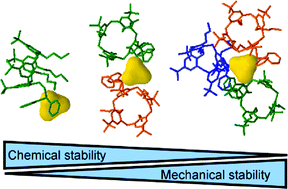 Enzymes are able to stabilize metal clusters in an accessible and coordinatively unsaturated state, which allows them to control of adsorption and catalysis at the metal cluster site using an organic–ligand approach. However, the structural features that allow enzymes to achieve such high degrees of coordinative unsaturation remain unknown.
Enzymes are able to stabilize metal clusters in an accessible and coordinatively unsaturated state, which allows them to control of adsorption and catalysis at the metal cluster site using an organic–ligand approach. However, the structural features that allow enzymes to achieve such high degrees of coordinative unsaturation remain unknown.
Alexander Katz and his group from UC Berkeley make steps towards determining this by making new stable coordinatively unsaturated iridium clusters in solution and finding out the factors that control their stability. The team use calix[4]arene phosphine ligands to stabilize decarbonylated Ir4 clusters and prevent their aggregation. You can find out whether the groups have solved the enzyme metal cluster puzzle by reading their Hot Article in Dalton Transactions.
The Hot Article is free to access until 31st January 2012:
Stabilization of coordinatively unsaturated Ir4 clusters with bulky ligands: a comparative study of chemical and mechanical effects
Alexander Okrut, Oz Gazit, Namal de Silva, Rita Nichiporuk, Andrew Solovyov and Alexander Katz
Dalton Trans., 2012, DOI: 10.1039/C1DT11734C










